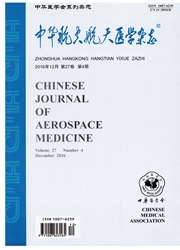

 中文摘要:
中文摘要:
目的研究经模拟微重力条件培养的胰岛是否能够降低胰岛移植过程中引发的免疫排斥反应,进而延长胰岛的体内存活时间。方法分离新鲜胰岛,应用培养皿对胰岛进行静态培养,同时应用旋转式生物反应器对胰岛进行三维立体培养。应用吖啶橙一碘化丙啶(AO-PI)染色和葡萄糖刺激实验对3种条件下培养得到的胰岛进行生物学活性研究。2000当量胰岛在旋转式生物反应器中培养5d后,将其移植入经链脲佐菌素(STZ)处理的糖尿病模型SD大鼠。肾被膜下作为实验组,以新鲜分离的胰岛和静态培养5d的胰岛移植入经STZ处理的糖尿病模型SD大鼠肾被膜下作为对照组。在不同时间点上,检测各组SD大鼠血糖变化情况;对各移植组中大鼠进行糖耐受实验。切除。肾被膜下的移植物组织作为标本,进行苏木精一伊红(HE)染色及胰岛素组织化学染色检测。结果体外检测结果表明,与新鲜分离的胰岛和静态培养的胰岛相比,微重力条件下培养的胰岛仍保持良好的胰岛素合成及分泌功能。体内实验表明,微重力条件下培养的胰岛体内移植组的血糖保持正常的时间明显高于接受静态培养的胰岛和新鲜分离的胰岛移植组。将微重力培养条件下胰岛移植大鼠后,取。肾被膜下移植区组织标本进行HE染色,未见明显淋巴细胞浸润,胰岛素免疫组织化学均可见阳性细胞。而新分离的胰岛以及静态培养的胰岛移植后,大鼠。肾被膜下移植物组织标本可见淋巴细胞浸润,移植物的厚度明显变小。结论胰岛在微重力条件下培养可降低移植引起的免疫排斥反应,进而延长移植物体内存活时间。
 英文摘要:
英文摘要:
Objective We cultured islets in the simulated microgravity condition in vitro so that to study if this kind of treatment can improve the survival and function of islets by reducing the immunological rejection initiated in the process of islet transplantation. Methods Isolated and purified islets were cultured in the rotary wall vessel bioreactor(RWV)as simulated microgravity condition for 5 days before transplantation. The freshly isolated islets and. islets cultured on dishes were used as control groups. The biological activity of the islets was detected by acridine orange propidium iodine (AOPI) staining and glucose stimulation assay. After transplantation of 2000 IEQ islets (freshly isolated, cultured under microgravity condition or cultured in dishes) in the renal capsule of streptozocin (STZ) treated diabetic SD rat models, the glucose levels in the blood at different time points were measured. Sugar tolerance test was also done on the recipient rats after their blood glucose returned to normal level. After two weeks of transplantation, the sub-capsular renal grafts were removed and detected by hematoxylin and eosin (HE) staining and insulin immunohistochemica staining. Results Compared with the freshly isolated islets and those cultured in dishes,islets cultured under microgravity condition for 5 days was the best in insulin synthesis and secretion. In vivo transplantation results also showed that animals transplanted with those cultured islets could maintain normal blood glucose level for longer time. HE staining revealed that the grafts under the renal capsule of animals were obvious and nearly no lymphocytes infiltration in them. Immunohistochemical staining of insulin demonstrated that grafts still could express insulin. On the contrary, the grafts from the recipients receiving freshly isolated islets or cultured islets in dishes had obvious lyrnphocytes infiltration and the size of the grafts was small. Conclusions Cultivation under microgravity condition could remarkably reduce imm
 同期刊论文项目
同期刊论文项目
 同项目期刊论文
同项目期刊论文
 期刊信息
期刊信息
